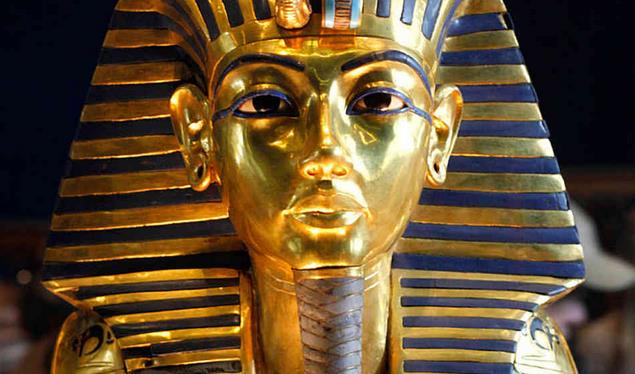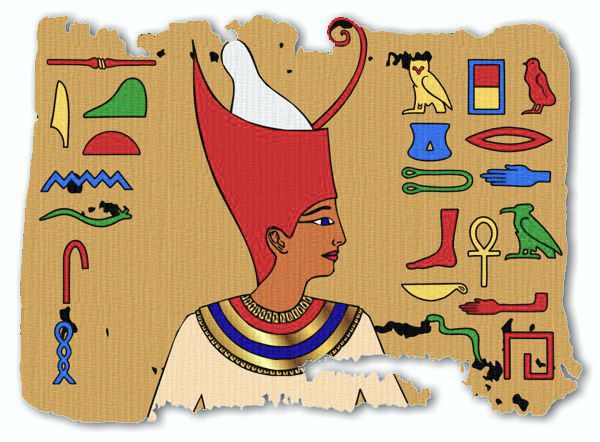Ancient Egypt has often been the main reference point when interpreting the past and experience of Africa. Many believe that African history and civilization did all start from Egypt even though there are other kingdoms that sprang up to become equally powerful empires.
In terms of fashion and style, ancient Egyptians were noted to have adorned their bodies with clothes that served physical, religious and ceremonial functions, doing away as much as possible with excess material acquisition.
Their rulers, or the pharaohs, who were seen as living representatives of a god or as the mediator between the gods and the people, were, of course, not left out of this fashion trend.

Pharaohs were depicted with a crown. Pic credit: Ancient Origins
Jewellery, including the use of gold and lapis lazuli, as well as, fashion symbols and totems of their spiritual leanings was commonplace.
Pharaohs were, however, depicted with a crown. From the red crown, the white, crown to the war crowns, these special objects of authority were taken into the grave for the afterlife, according to historians.
However, to date, the single most important piece of headwear in all of Egyptian history is the pschent or the famed double crown of Egypt.

Statue of Amenhotep III wearing a pschent
The double crown, adopted around the year 3000 BCE, symbolized the unification of the country as it was “an amalgamation” of the white crown of Upper Egypt and the red crown of Lower Egypt.
According to most accounts, Upper Egypt (which surrounded the upper Nile River in the south of present-day Egypt and in Sudan) and Lower Egypt (most of present-day Egypt) were united in about 3100 BCE by the First Dynasty pharaoh named Menes.
Before then, the rulers of Upper and Lower Egypt each had a different type of crown.
“The White Crown of Upper Egypt, known as the hedjet, was a white helmet that was shaped much like half a football with a stretched out, rounded end. It also had a coiled uraeus, or sacred hooded cobra, just above the forehead. The Red Crown of Lower Egypt, known as the deshret, was a round, flat-topped hat that extended down the back of the neck and had a tall section that projected upward from the back side. From the base of the projection a thin reed curled up and forward, ending in a spiral,” writes Encyclopedia.
When Menes united the two Egypts, he combined their headwear into the pschent or Double Crown. This was to represent his power over all of Egypt as a single and united country.

The pschent had as its base the red crown, which completely covered the wearer’s hair. The white crown emerged out of the top of the red crown. Pic credit: WorthPoint
According to Egyptian Gods and Goddesses, “the pschent was legendary for bearing two animal emblems: the Egyptian cobra or the uraeus in a ready to strike form representative of the patron goddess of Lower Egypt, Wadjet and the Egyptian vulture that symbolized Nekhbet – the tutelary goddess of Upper Egypt.”
These symbols – the cobra and vulture – were usually fastened in front of the crown and were known as the nebty (royal title) of the two goddesses. The vulture was later replaced with another cobra.
Essentially, the pschent had as its base the red crown, which completely covered the wearer’s hair. The white crown emerged out of the top of the red crown.

The double crown of Egypt. Pic credit: Artyfactory
Even though the pschent has been attributed to Menes, the first pharaoh to wear it as royal regalia was Djet as evidenced by a rock inscription. Deities like Horus and Atum are also depicted wearing the double crown largely due to their association with the pharaohs.
At the moment, no physical evidence of the double crown has been preserved or discovered as it is mostly found in artwork, inscriptions and statues. Historians attribute this to the fact that the pschent was made of organic materials like rubber, cloth, or reeds.

No physical evidence of the double crown has been preserved or discovered as it is mostly found in artwork, inscriptions and statues. Pic credit: pixabay.com
From the time of King Menes, nearly every pharaoh from the Old Kingdom (c. 2700–c. 2000 BCE), Middle Kingdom (c. 2000–c. 1500 BCE), and New Kingdom (c. 1500–c. 750 BCE) is depicted wearing the pschent in hieroglyphs, pictures of Egyptian life that are preserved in tombs.










